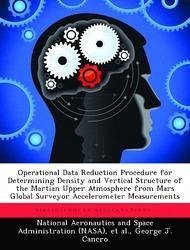The success of aerobraking by the Mars Global Surveyor (MGS) spacecraft was partly due to the analysis of MGS accelerometer data. Accelerometer data was used to determine the effect of the atmosphere on each orbit, to characterize the nature of the atmosphere, and to predict the atmosphere for future orbits. To interpret the accelerometer data, a data reduction procedure was developed to produce density estimations utilizing inputs from the spacecraft, the Navigation Team, and pre-mission aerothermodynamic studies. This data reduction procedure was based on the calculation of aerodynamic forces from the accelerometer data by considering acceleration due to gravity gradient, solar pressure, angular motion of the MGS, instrument bias, thruster activity, and a vibration component due to the motion of the damaged solar array. Methods were developed to calculate all of the acceleration components including a 4 degree of freedom dynamics model used to gain a greater understanding of the damaged solar array. The total error inherent to the data reduction procedure was calculated as a function of altitude and density considering contributions from ephemeris errors, errors in force coefficient, and instrument errors due to bias and digitization. Comparing the results from this procedure to the data of other MGS Teams has demonstrated that this procedure can quickly and accurately describe the density and vertical structure of the Martian upper atmosphere.
Hinweis: Dieser Artikel kann nur an eine deutsche Lieferadresse ausgeliefert werden.
Hinweis: Dieser Artikel kann nur an eine deutsche Lieferadresse ausgeliefert werden.








